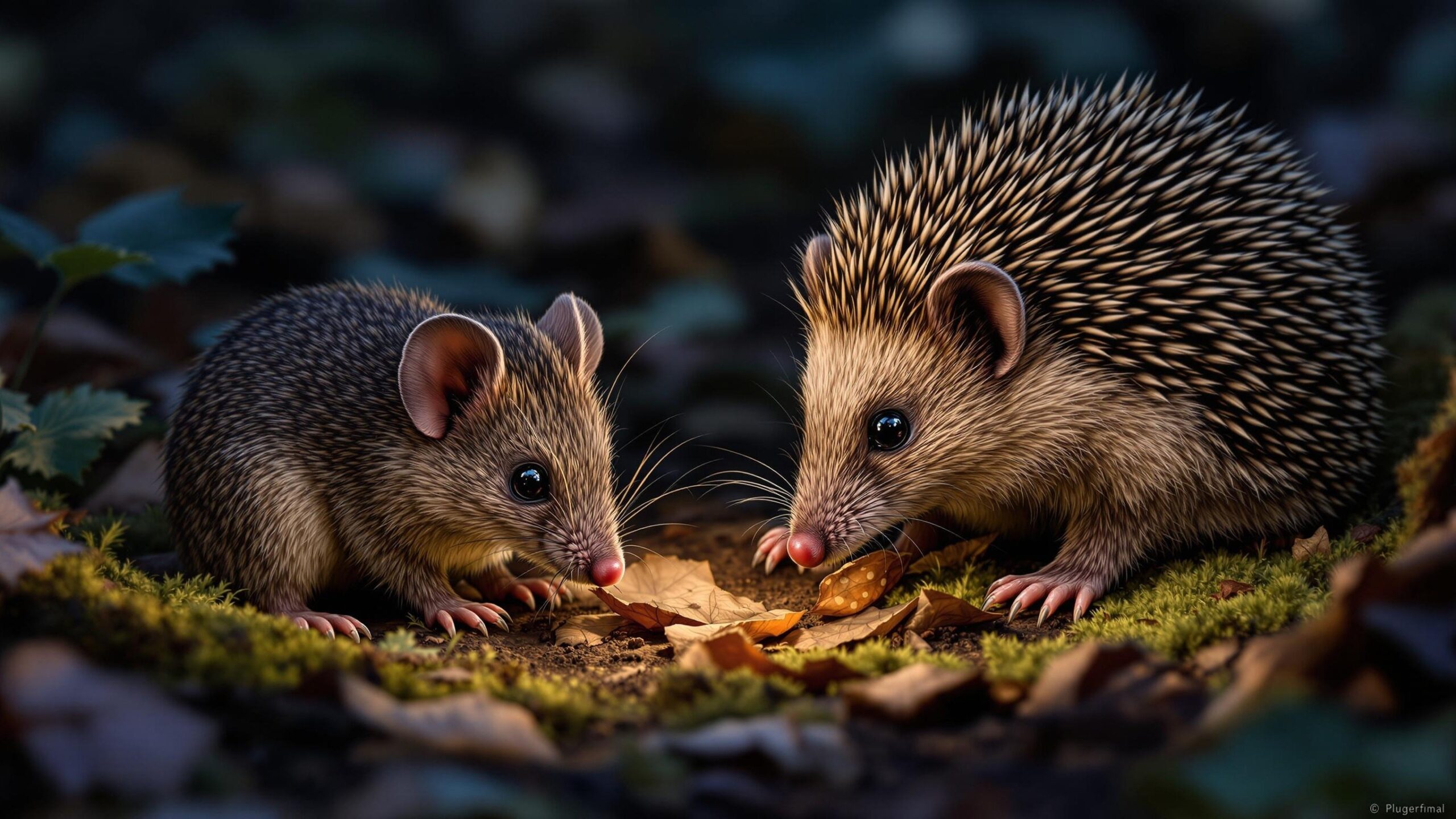Small Mammals: The Quiet Architects of Nature’s Balance
In the rustling underbrush of a grassy meadow, a mouse darts beneath a leaf. In the twilight shadows of a forest, a bat takes flight. And in a suburban backyard, a squirrel balances along a fence, bushy tail flicking as it searches for food. Small mammals are everywhere—beneath our feet, above our heads, and often just out of sight. Though their size might seem unremarkable at first glance, these creatures play essential roles in ecosystems around the globe. From seed dispersal and pest control to soil aeration and pollination, small mammals are nature’s quiet architects. They are also among the most diverse, adaptive, and fascinating members of the animal kingdom. This article explores the world of small mammals: a sweeping category that includes rodents, rabbits, hares, pikas, shrews, moles, hedgehogs, and more. While they may differ in appearance, diet, and habitat, they share common biological characteristics and a surprising ecological impact. Together, these animals form the base of countless food chains and the backbone of ecological systems both wild and domestic.

Bats
The Winged Wonders of the Night: A Deep Dive into the World of Bats When the sun dips below the horizon and most birds retire to roost, another world stirs to life in the dusky skies above. Silhouetted against moonlight, the shadows of thousands of flitting wings glide through the air—the bats have emerged. These enigmatic creatures, often misunderstood or overlooked, are among the most successful mammals on Earth. With

Bug-Eating Mammals
Bug-Eating Mammals: Nature’s Insect Control Specialists Hidden beneath forest floors, rustling in leaf litter, scurrying across open plains, or emerging under cover of night, bug-eating mammals—or insectivores—form one of the most fascinating and ecologically vital groups in the animal kingdom. Though they are small and often unseen, their influence on ecosystems is monumental. These mammals specialize in devouring insects and other invertebrates, playing critical roles in soil health, population control
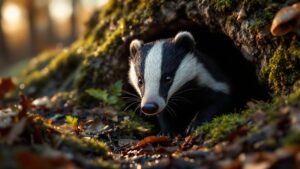
Carnivorous Small Mammals
The Stealthy Hunters of the Undergrowth: An Introduction to Carnivorous Small Mammals Tucked beneath the forest floor, darting through desert sands, or prowling the night in suburban woodlands, small carnivorous mammals are among the animal kingdom’s most effective and enigmatic predators. Though they lack the size and celebrity of their larger cousins—the lions, wolves, and bears—their adaptations for hunting are no less fascinating. From razor-sharp teeth and keen senses to

Gliding Mammals
Soaring Through the Canopy: A Journey into the World of Gliding Mammals High above the forest floor, where dappled sunlight flickers through emerald leaves and branches sway in a perpetual dance with the wind, a shadow silently sails from tree to tree. No wings beat the air. No sound betrays its presence. This is no bird, no insect, but a gliding mammal—a creature that has mastered the art of flight
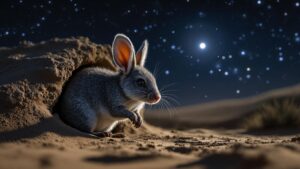
Other Small Marsupials
Hidden Treasures of the Marsupial World: A Deep Dive into Other Small Marsupials In the dense underbrush of Australia’s eucalyptus forests, beneath the leaf litter of Tasmania’s alpine slopes, and darting through New Guinea’s tangled rainforest vines, live a fascinating and often overlooked group of animals: the other small marsupials. While kangaroos, koalas, and sugar gliders capture much of the public imagination, the world of marsupials is far more expansive
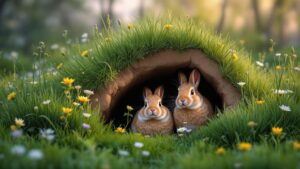
Rabbits, Hares & Pikas
Rabbits, Hares, and Pikas: Nature’s Nimble Navigators of Field and Mountain From the gentle rustle of grass in a spring meadow to the echo of chirps across alpine slopes, the world of rabbits, hares, and pikas pulses with quiet yet profound energy. These small mammals, often dismissed as mere prey animals, are actually resilient survivors, ecological contributors, and symbols of agility, fertility, and seasonal change. Found on nearly every continent
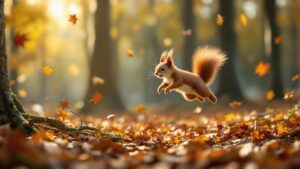
Rodents
Rodents: The Small Mammals That Rule the World Rodents may be small in size, but they are giants in ecological importance, evolutionary success, and sheer numbers. Found on every continent except Antarctica, rodents are nature’s adapters, survivors, and problem-solvers. With over 2,000 species making up more than 40% of all mammal diversity, they are the most abundant group of mammals on Earth. From forests to deserts, cities to farmlands, rodents
Understanding the Category: What Defines a Small Mammal
Small mammals are generally classified as mammals weighing less than a few kilograms (under 10 pounds), though there’s no strict size cutoff. What unites this group is not just their diminutive size, but their often rapid life cycles, high reproductive rates, and critical roles in ecological processes. They exist in nearly every environment—from deserts and tundra to rainforests and cities. Most small mammals are endothermic with fur-covered bodies, mammary glands for nursing young, and specialized teeth adapted to their diet. They tend to have heightened senses of hearing and smell, quick reflexes, and behavioral traits geared toward evasion and survival. Many are nocturnal or crepuscular, foraging under the cover of darkness to avoid predators. While individually small, collectively they represent one of the most populous and diverse groups of mammals. Understanding their sub-categories helps illuminate their incredible adaptability and importance.
Rodents: The Most Prolific Small Mammals on Earth
Rodents make up the largest order of mammals, comprising nearly half of all mammalian species. This group includes mice, rats, squirrels, voles, chipmunks, beavers, porcupines, and more. Rodents are characterized by a pair of continuously growing incisors in both the upper and lower jaws, which they keep worn down by gnawing on wood, seeds, or even metal. Mice and rats are perhaps the most well-known rodents due to their proximity to humans. House mice and brown rats thrive in cities and towns, living opportunistically on human waste and shelter. Though often maligned as pests, they play crucial roles in scientific research, food chains, and even seed dispersion. Squirrels and chipmunks are arboreal specialists with strong hind legs and keen spatial memory for food caching. Their acrobatic foraging behaviors and bushy tails make them among the most visible wildlife in urban and woodland settings. Beavers, the engineers of the rodent world, use their powerful jaws and teeth to fell trees and build dams that transform entire ecosystems. Their ponds create wetlands that benefit countless other species. Rodents also include lesser-known but equally important species like voles, lemmings, and agoutis, which provide food for predators and help maintain soil and vegetation dynamics.
Rabbits, Hares, and Pikas: The Lagomorphs of the Land
Often mistaken for rodents, lagomorphs form their own distinct order and include rabbits, hares, and pikas. These animals are herbivorous, have sharp continuously growing teeth, and are generally known for their long ears, powerful hind legs, and reproductive speed. Rabbits are prolific breeders with a global presence. The European rabbit, introduced widely by humans, is the ancestor of all domestic rabbits. Wild rabbits like the eastern cottontail create intricate burrow systems and feed on grasses, clovers, and herbs, helping to prune vegetation and provide prey for carnivores. Hares differ from rabbits by being larger, faster, and born fully furred with open eyes. They are solitary and prefer open environments like grasslands and deserts. The snowshoe hare, with its seasonally changing fur color, is a classic example of adaptation to predator evasion and camouflage. Pikas are small, round-eared mammals native to cold mountain environments. Often overlooked, they gather haypiles of dried plants to sustain themselves through harsh winters. Pikas are considered sensitive indicators of climate change due to their vulnerability to warming temperatures.
Bug-Eating Mammals: The Insectivorous Champions
Shrews, moles, and hedgehogs belong to a diverse group of small mammals that primarily feed on insects, earthworms, and other invertebrates. These creatures are often hidden underground or active at night, but their presence is essential for soil health and pest control. Shrews have high metabolisms and voracious appetites, sometimes consuming twice their body weight daily. Some shrews even produce venom to immobilize prey. Despite their small size and seemingly frantic movements, shrews are important predators of insects and larvae. Moles are expert diggers with large, spade-like forelimbs and sensory whiskers that help them navigate dark tunnels. Their underground lifestyle aerates the soil, and their diet of grubs and beetles helps keep pest populations in check. Hedgehogs, found in Europe, Asia, and Africa, are covered in protective spines and curl into balls when threatened. These generalist feeders eat insects, snails, and even small vertebrates, making them popular allies in gardens and farms.
Marsupial and Exotic Small Mammals
Outside the typical classifications, there are small marsupials and unique regional species that deserve recognition. In Australia, small marsupials like antechinuses, dunnarts, and sugar gliders fill ecological niches similar to those of rodents and insectivores elsewhere. Sugar gliders are gliding possums that use a membrane between their limbs to soar between trees. These nocturnal omnivores feed on nectar, sap, insects, and fruit. Their social behavior and ability to glide make them one of the most charismatic small mammals of Oceania. In the tropics, tenrecs of Madagascar and sengis (elephant shrews) of Africa showcase convergent evolution—developing features similar to other small mammals despite distant ancestry. Sengis, for example, are not shrews but closely related to elephants and manatees.
Bats: The Winged Mammals of the Night
Though often grouped separately, many species of bats fit within the “small mammal” category by size and ecological function. Bats are the only mammals capable of true flight, and they are found on every continent except Antarctica. Insectivorous bats such as little brown bats and pipistrelles consume vast numbers of mosquitoes and crop pests each night. Their echolocation systems allow them to navigate and hunt in complete darkness. Fruit bats or flying foxes play essential roles in pollination and seed dispersal, especially in tropical ecosystems. Despite their ecological benefits, bats are among the most misunderstood and persecuted mammals. They are also vulnerable to habitat loss, disease (such as white-nose syndrome), and climate shifts. Conservation of bats contributes significantly to biodiversity and agriculture.
Ecological Impact: The Unsung Ecosystem Engineers
Across all habitats, small mammals play pivotal roles. Their digging, burrowing, foraging, and feeding behaviors help maintain soil quality, control insect populations, spread seeds, and influence plant growth. They also serve as prey for larger mammals, birds, reptiles, and even humans in some regions. Rodents like prairie dogs shape grassland ecosystems with their burrows, which provide shelter for other species. Beavers reshape rivers and streams, while bats reduce the need for chemical pesticides. Rabbits and hares influence plant community dynamics through selective grazing. Many small mammals contribute to scientific research, agriculture, and medicine. From laboratory mice advancing biomedical research to the use of bat guano as fertilizer, these creatures contribute to human society in ways often overlooked.
Conservation Challenges and Human Connections
Despite their abundance, small mammals face numerous threats. Habitat fragmentation, agricultural expansion, pesticide use, invasive species, and climate change all impact their survival. Small mammals often go unnoticed in conservation planning due to their size and perceived commonness. Some species have become invasive pests in new environments, while others have declined dramatically due to environmental stressors. Grassland degradation, deforestation, urban sprawl, and monoculture farming all reduce the complexity and stability of habitats small mammals rely on.
However, people also maintain strong cultural and personal connections to many small mammals. Rabbits, hamsters, guinea pigs, and hedgehogs are beloved pets. Squirrels and chipmunks delight birdwatchers and parkgoers. Folktales and stories from around the world feature mice, voles, and hares as tricksters, heroes, and symbols of resilience. Citizen science initiatives and wildlife-friendly gardening can foster positive relationships between people and small mammals. Encouraging biodiversity in backyards and communities helps sustain these vital creatures.
A Closer Look at the Small and Mighty
Small mammals may not dominate headlines or wildlife documentaries like lions or whales, but their importance is immense. They are builders of burrows, planters of forests, controllers of pests, and providers of food for predators. Their contributions form the foundation of functioning ecosystems and resilient landscapes. By learning about these diverse creatures and sharing their stories, we help shift attention toward protecting all levels of biodiversity—not just the large and charismatic. Small mammals invite us to slow down, look closer, and appreciate the intricate details of life around us. Explore further into the unique world of rodents, lagomorphs, insectivores, marsupials, and bats. Each sub-group holds its own secrets, evolutionary marvels, and ecological gifts. In understanding them, we better understand the world they help sustain—and our place within it.

